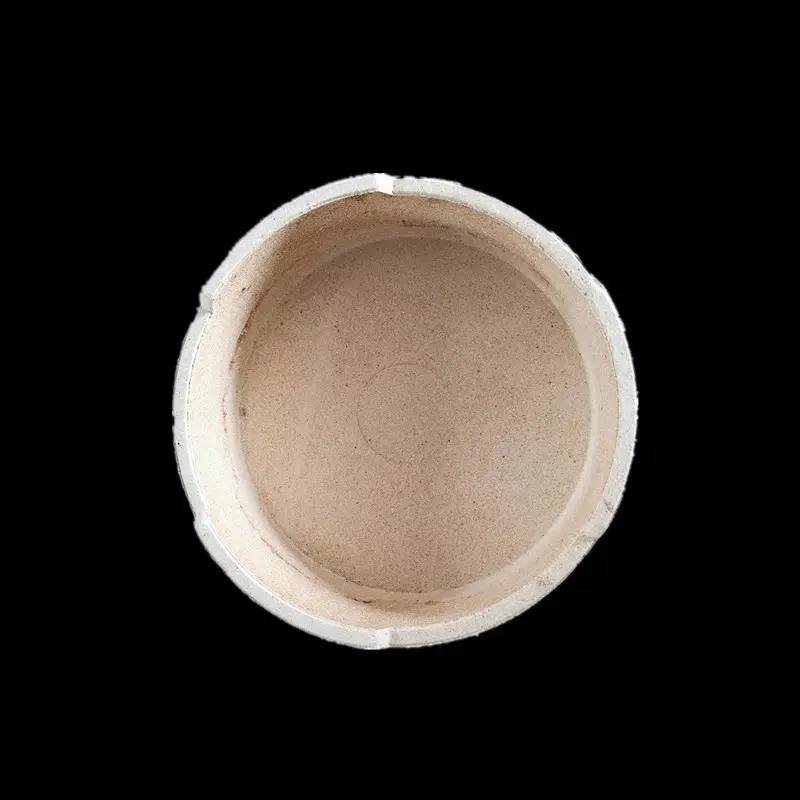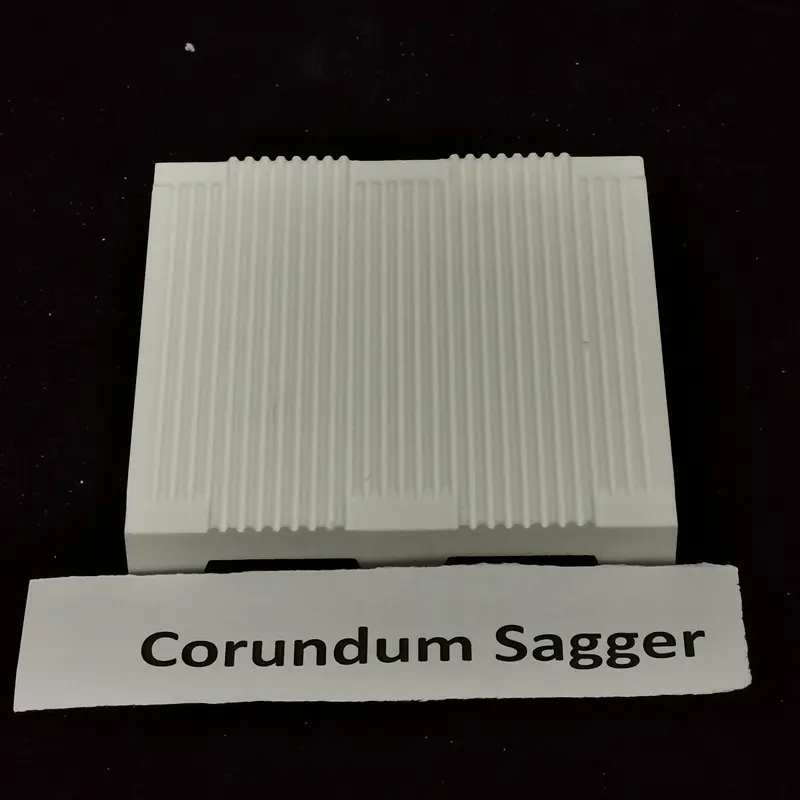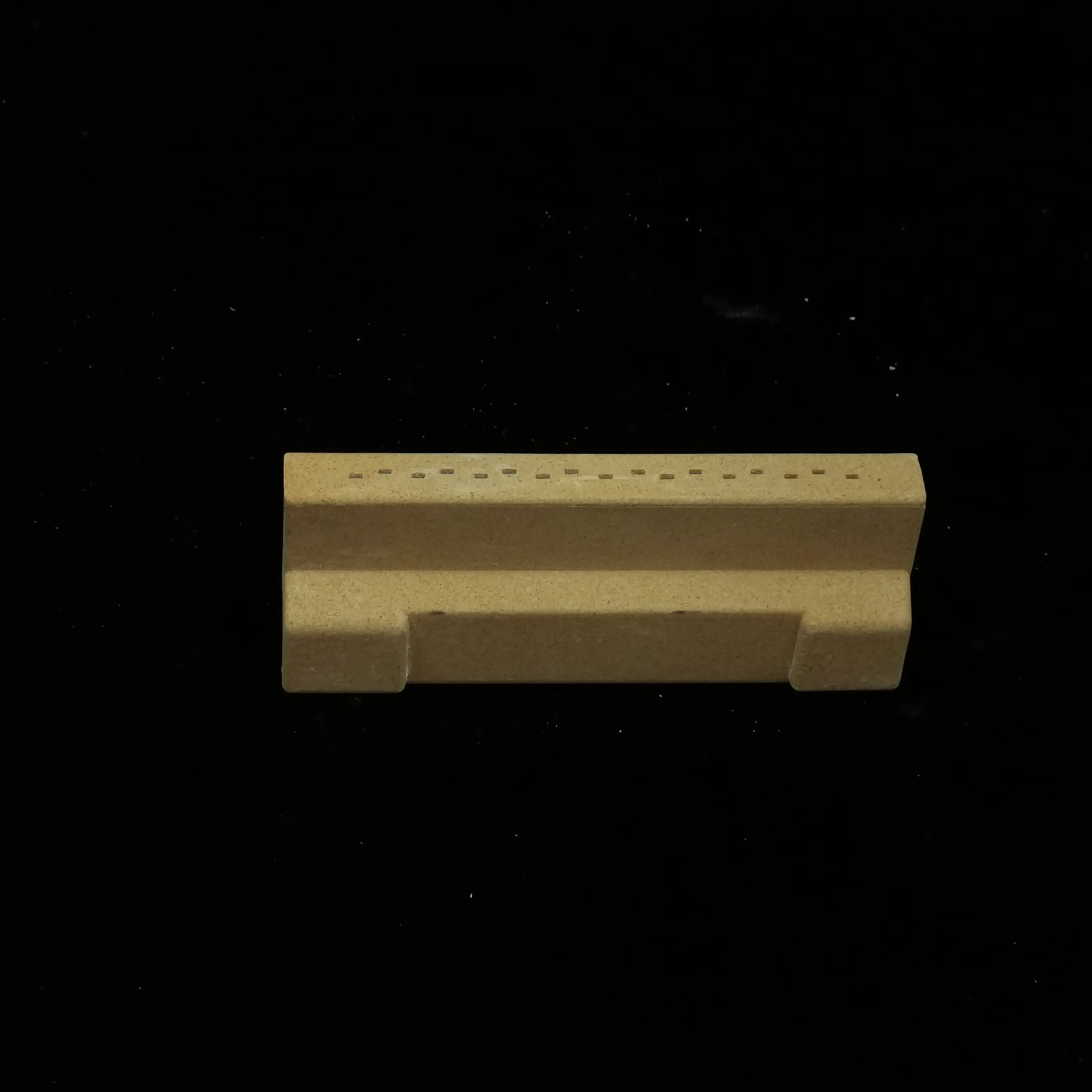High-Performance Thermal Management Solutions Cordierite Ceramic Cover Plates
Material Characteristics and Advantages
The unique crystalline structure of cordierite ceramics delivers several key benefits that make these cover plates ideal for challenging applications:
-
Ultra-Low Thermal Expansion (1.0-3.0 × 10⁻⁶/°C from 25-1000°C):
This exceptional property enables cordierite cover plates to withstand rapid temperature fluctuations without cracking or warping, outperforming most other ceramic materials in thermal shock resistance. The near-zero thermal expansion characteristic maintains dimensional stability across wide temperature ranges. -
Excellent Thermal Stability:
With a maximum service temperature of 1400°C in oxidizing atmospheres, cordierite plates maintain structural integrity in most high-temperature processes. The material's low thermal conductivity (1.5-2.0 W/m·K) provides effective insulation while resisting heat-induced deformation. -
Chemical Inertness:
Cordierite demonstrates remarkable resistance to most acids, alkalis, and molten metals, making these cover plates suitable for corrosive environments. The material's low porosity (<5%) further enhances its chemical durability by minimizing surface area exposure. -
Mechanical Properties:
While not as hard as alumina, cordierite offers sufficient mechanical strength (flexural strength 50-100 MPa) for most cover plate applications, combined with good fracture toughness that prevents catastrophic failure.
Manufacturing Process
The production of high-quality cordierite ceramic cover plates involves several precision-controlled steps:
-
Raw Material Preparation:
High-purity kaolin, talc, and alumina powders are carefully blended in specific stoichiometric ratios to achieve the desired cordierite composition. -
Forming Process:
Advanced techniques including dry pressing, isostatic pressing, or tape casting are employed to create plates with uniform density and precise dimensional tolerances (±0.5% typically). -
Firing Cycle:
A carefully controlled sintering process between 1350-1450°C transforms the green body into dense, crystalline cordierite ceramic. The firing profile is optimized to promote complete cordierite phase formation while preventing deformation. -
Post-Processing:
Precision machining, including surface grinding and edge finishing, ensures flatness (<0.1mm/m) and smooth surface finish (Ra <0.8μm) critical for sealing applications.
Industrial Applications
Cordierite ceramic cover plates serve vital functions across multiple industries:
-
Semiconductor Processing:
Used as diffusion plates and furnace covers in CVD and LPCVD systems, where their low thermal expansion prevents particle generation during thermal cycling. -
Heat Treatment Equipment:
Serve as protective covers in annealing and brazing furnaces, shielding heating elements from process contaminants while withstanding repeated thermal shocks. -
Glass Manufacturing:
Employed as covers in glass melting and forming operations, resisting attack from molten glass vapors and thermal stresses. -
Energy Storage Systems:
Used in solid oxide fuel cells and battery manufacturing as insulating covers that maintain performance at high operating temperatures. -
Laboratory Equipment:
Provide stable, inert surfaces for high-temperature sample processing in analytical instruments and research furnaces.
Performance Comparison
When evaluated against alternative cover plate materials, cordierite demonstrates distinct advantages:
-
Versus Alumina: Superior thermal shock resistance (10x better) though lower mechanical strength
-
Versus Mullite: Better thermal cycling performance and lower thermal expansion
-
Versus Silicon Carbide: Greater chemical stability in oxidizing environments
-
Versus Metals: No oxidation issues and better high-temperature dimensional stability
Design Considerations
Engineers specify cordierite cover plates based on several critical parameters:
-
Thickness Optimization:
Typical thickness ranges from 3-25mm, balancing mechanical strength with thermal mass considerations. -
Mounting Configuration:
Special edge designs accommodate thermal expansion differences when interfacing with other materials. -
Surface Features:
Optional grooves, holes, or textured surfaces can be incorporated for specific applications. -
Size Capabilities:
Modern manufacturing allows production of plates up to 600×600mm with consistent properties.
Quality Assurance
Premium cordierite cover plates undergo rigorous testing:
-
Thermal shock resistance testing (quench from 1100°C to room temperature)
-
Leak rate verification for sealing applications
-
Flatness measurement using laser interferometry
-
Chemical resistance testing in process-specific environments
Future Developments
Ongoing advancements in cordierite technology include:
-
Nano-Composite Formulations:
Incorporation of nano-scale additives to enhance mechanical properties while maintaining thermal advantages. -
Functional Coatings:
Development of specialized surface treatments to further improve chemical resistance or modify surface energy. -
Additive Manufacturing:
Emerging 3D printing techniques for complex geometries not achievable with conventional forming methods. -
Improved Purity Grades:
Ultra-high purity formulations for semiconductor applications where even trace elements matter.
Conclusion
Cordierite ceramic cover plates represent an optimal solution for demanding thermal management applications where reliability under thermal cycling and chemical exposure is critical. Their unique combination of properties continues to make them indispensable in advanced manufacturing processes across multiple industries. As technology advances push the requirements for thermal management components ever higher, cordierite ceramics are evolving through material innovations and manufacturing improvements to meet these challenges, ensuring their continued relevance in high-performance industrial applications.




